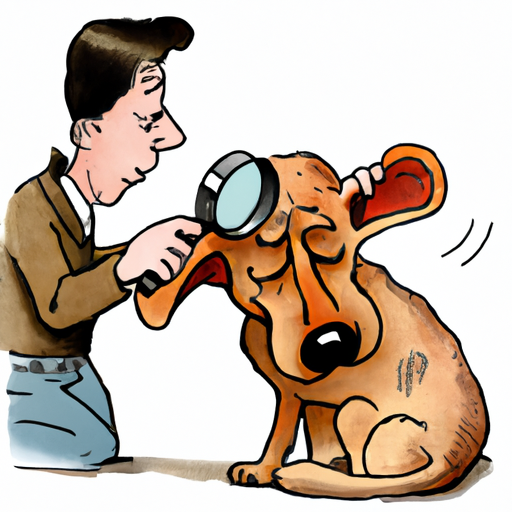As a caregiver to your furry companion, there is no doubt that you are dedicated to their wellbeing. However, every now and then, you may come across something peculiar that might leave you asking, “what is the brown stuff in my dog’s ears?” Don’t fret, because you are not alone. We will thoroughly explore this topic in the following sections.
H2: Understanding the Basics
First and foremost, let’s break down the basics. The brown stuff in your dog’s ears is typically ear wax, also known as cerumen, or it could be a sign of an ear infection. The ear wax is a normal substance produced by the body to protect and moisturize the ear canal, and to provide some protection against bacteria, fungi, insects, and water.
- Normal Ear Wax: Normally, dogs have a small amount of wax in their ears. It’s usually light brown, and it’s not usually visible unless you’re really looking for it. It should not have a strong odor.
- Ear Infections: If you’re seeing a lot of brown stuff, especially if it’s dark brown, smelly, or accompanied by redness, swelling, or apparent discomfort in your dog, it’s likely an ear infection.
Table 1: Normal Wax vs Ear Infection
| Normal Wax | Ear Infection | |
|---|---|---|
| Color | Light brown | Dark brown |
| Smell | No strong odor | Strong odor |
| Visibility | Not visible unless looked for | Clearly visible |
| Accompanied by | Nothing | Redness, swelling, discomfort |
H2: Causes of Ear Infections
There are several reasons why your dog might get an ear infection. Some breeds are more prone to ear infections than others, especially those with long, droopy ears. Here are the common causes:
- Allergies: Dogs, like humans, can be allergic to a variety of things, including food, dust mites, pollen, and molds. These allergies can lead to ear infections.
- Parasites: Ear mites are tiny parasites that live in the ear canal. They can cause irritation and inflammation, leading to an infection.
- Foreign Bodies: This is anything that doesn’t belong in your dog’s ear. It could be a tick, a piece of grass, or even a small toy.
- Autoimmune Diseases: Some autoimmune diseases can affect the ears, leading to chronic inflammation and infections.
H2: Treatment and Prevention
Treating ear infections in dogs usually involves a trip to the vet. They can clean your dog’s ears and prescribe medication to deal with the infection. Here are steps to prevent future ear infections:
- Regular Cleaning: Regularly clean your dog’s ears with a vet-approved cleaner.
- Diet and Allergy Management: If your dog has food allergies, you may need to switch to a hypoallergenic diet.
- Regular Vet Check-ups: Regular vet visits can catch early signs of ear infections.
H2: The Importance of Timely Intervention
If left untreated, ear infections can cause more serious problems, including chronic ear disease, hearing loss, and facial paralysis. It’s crucial to seek veterinary treatment as soon as you suspect an infection. Even if it’s ‘just’ wax, excessive wax can indicate an underlying issue that needs addressing.
H2: Frequently Asked Questions
Q1: Can I clean my dog’s ears at home?
Yes, you can. However, it’s important to use only vet-approved products and follow their instructions to avoid causing damage.
Q2: How often should I check my dog’s ears?
It’s good practice to check your dog’s ears once a week. If your dog is prone to ear infections, you may need to do it more frequently.
Q3: Can human ear infection treatments be used on dogs?
No, human ear infection treatments should not be used on dogs. Always consult with your vet for appropriate treatment.
Q4: My dog’s ears are red and hot to touch. Should I be worried?
Red and hot ears can be a sign of an infection. You should consult your vet as soon as possible.
Q5: Can I prevent ear infections in my dog?
Yes, regular cleaning, a proper diet, and regular vet check-ups can help prevent ear infections in your dog.
In conclusion, the brown stuff in your dog’s ears could be a normal part of their body’s functioning, or it could be a sign of a problem. As a responsible and caring owner, it’s essential to understand what’s normal for your dog and to seek veterinary advice when you’re concerned.



